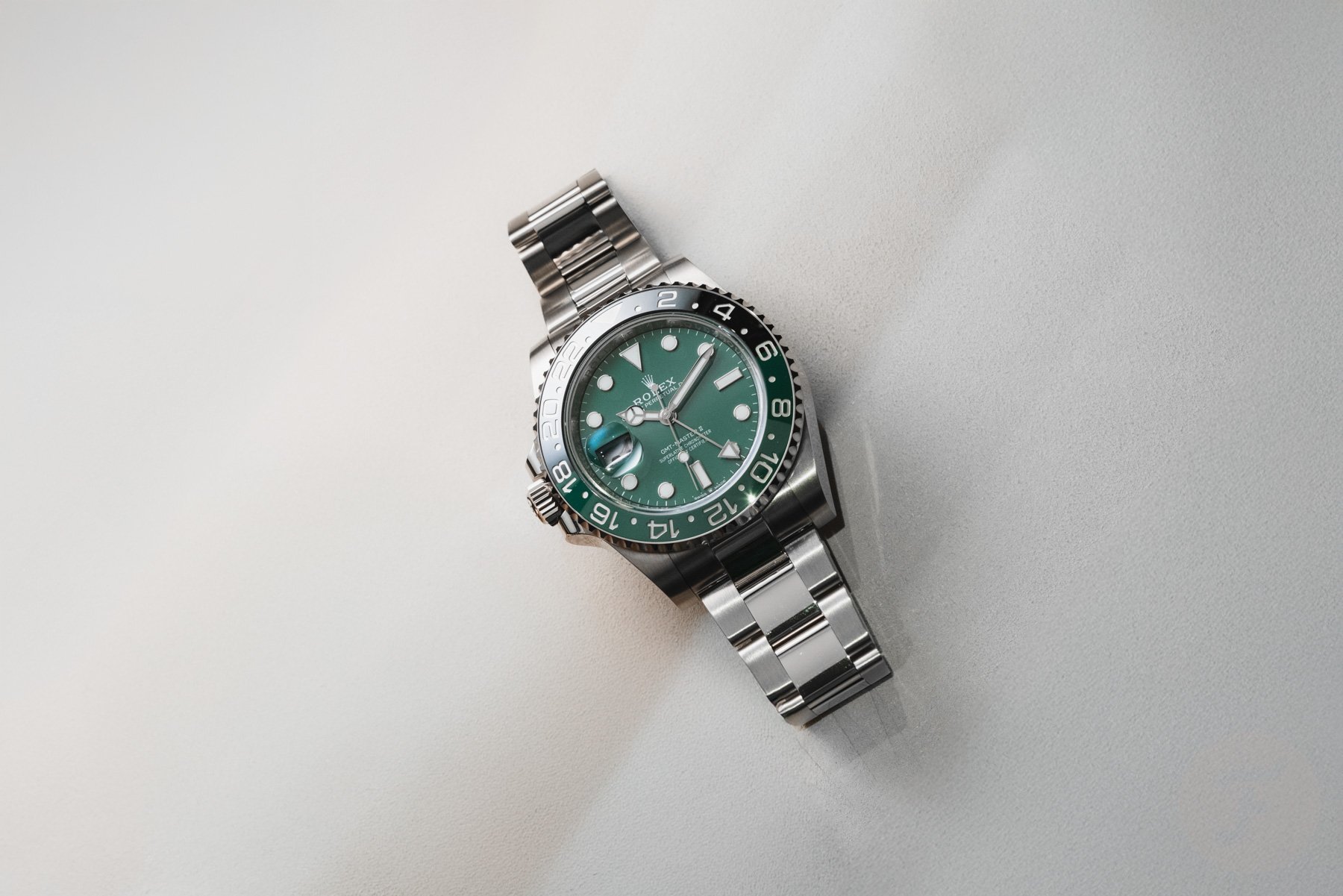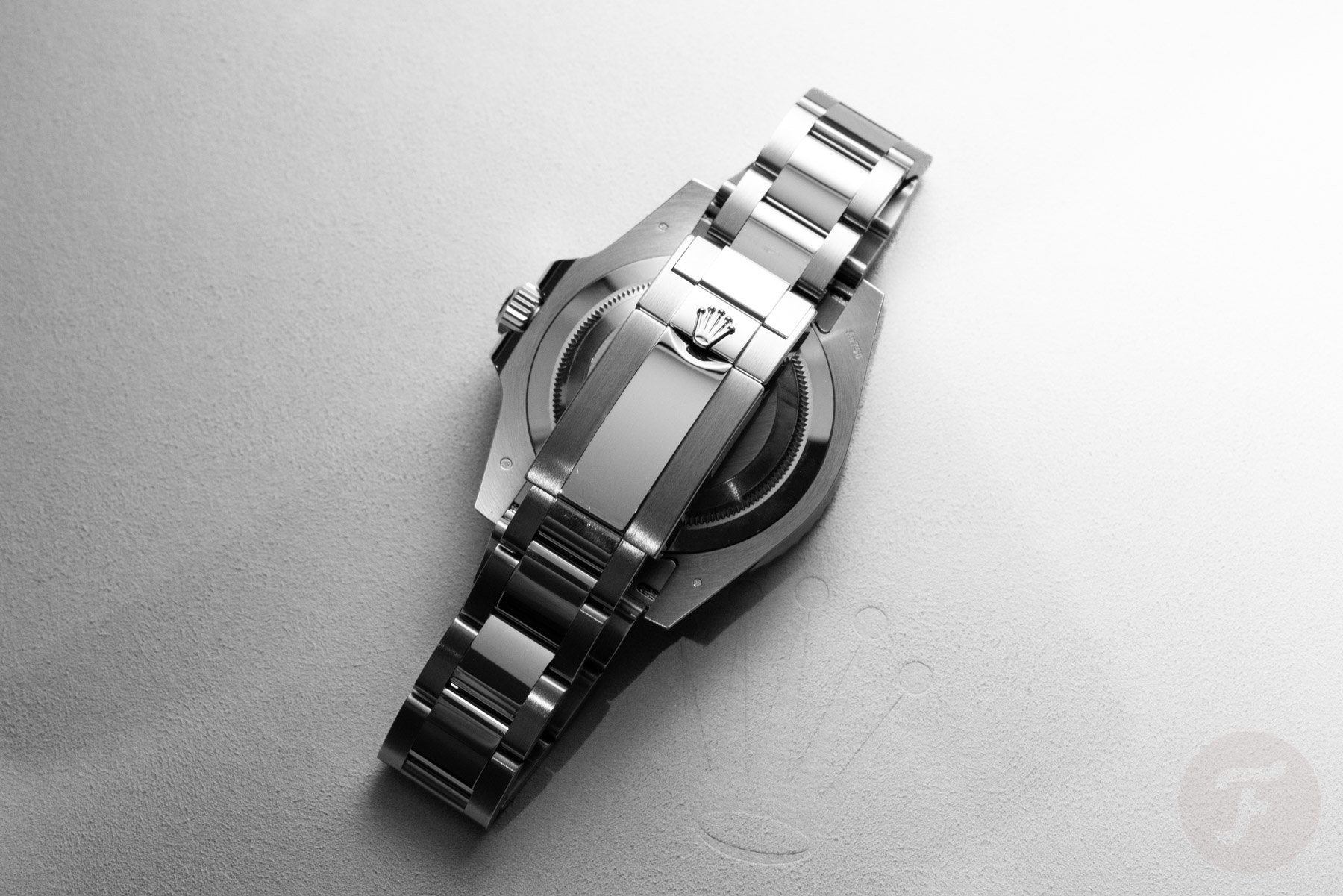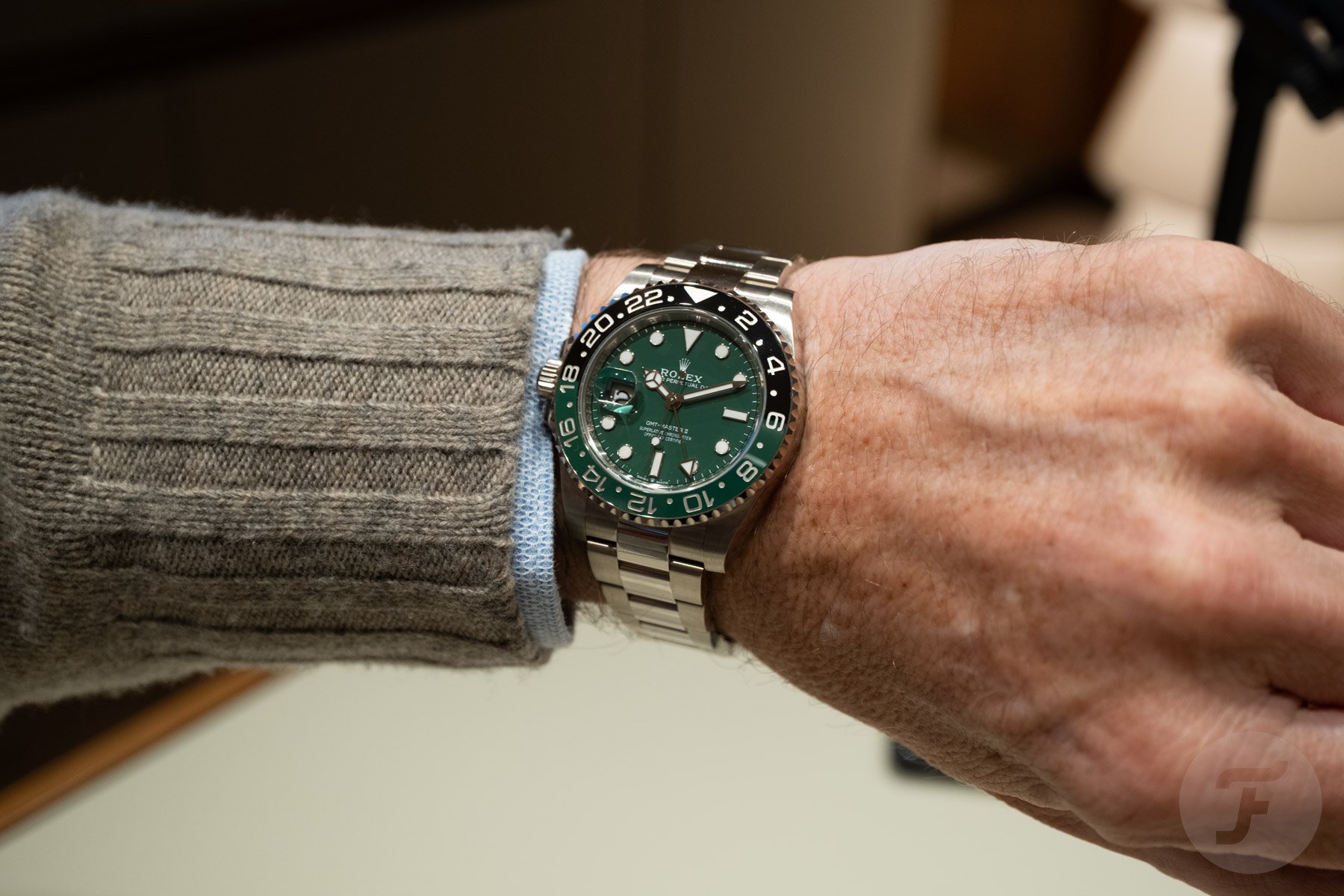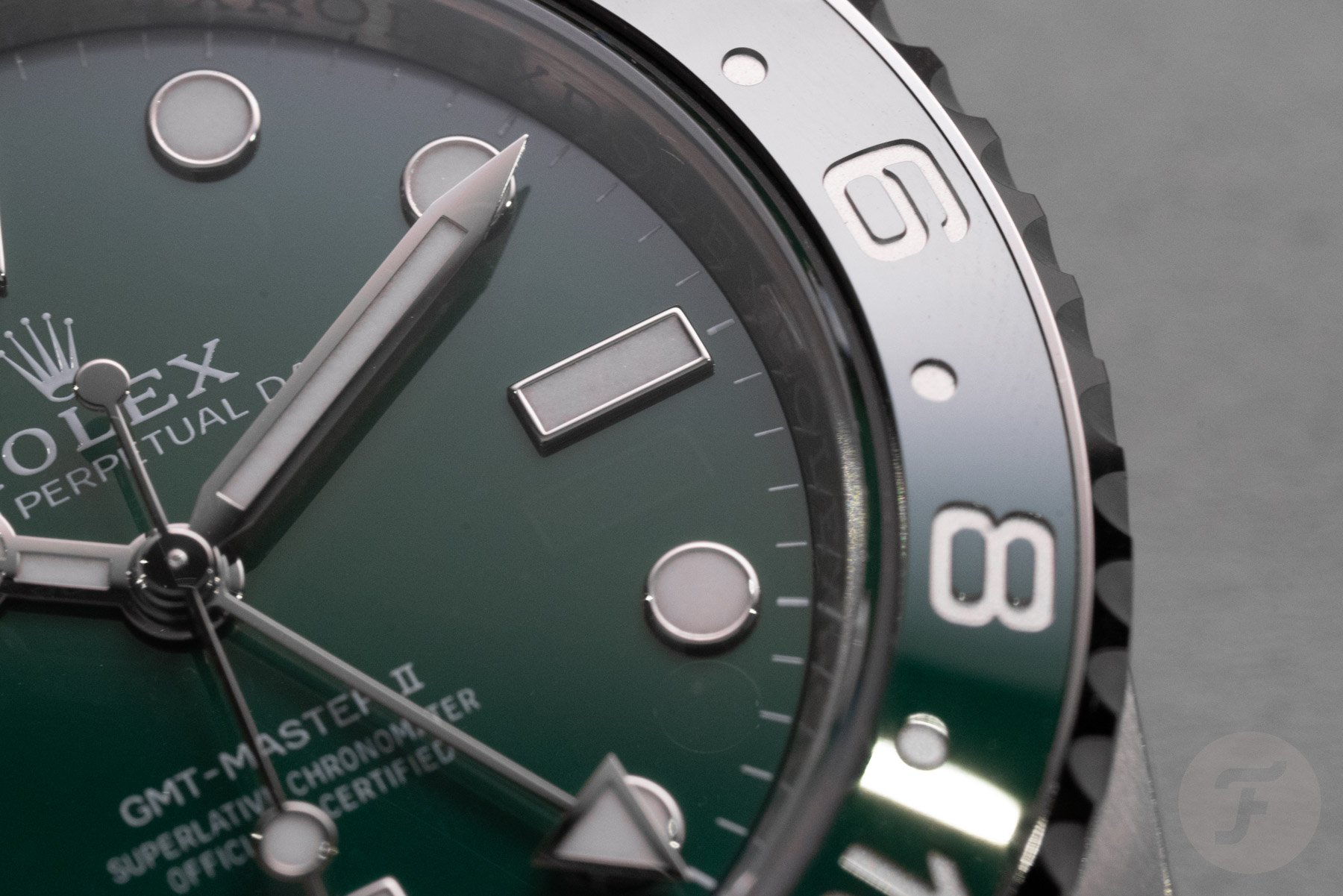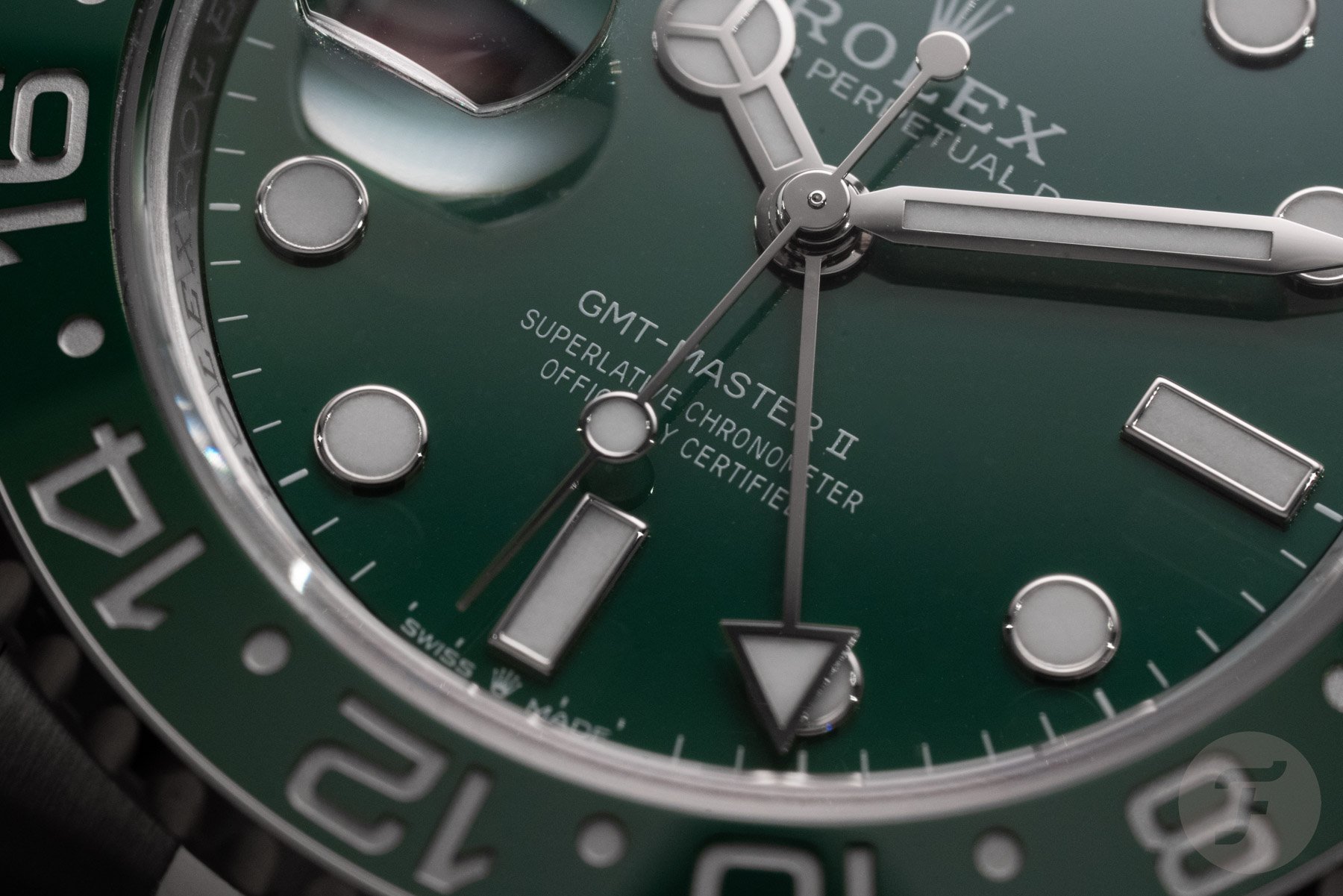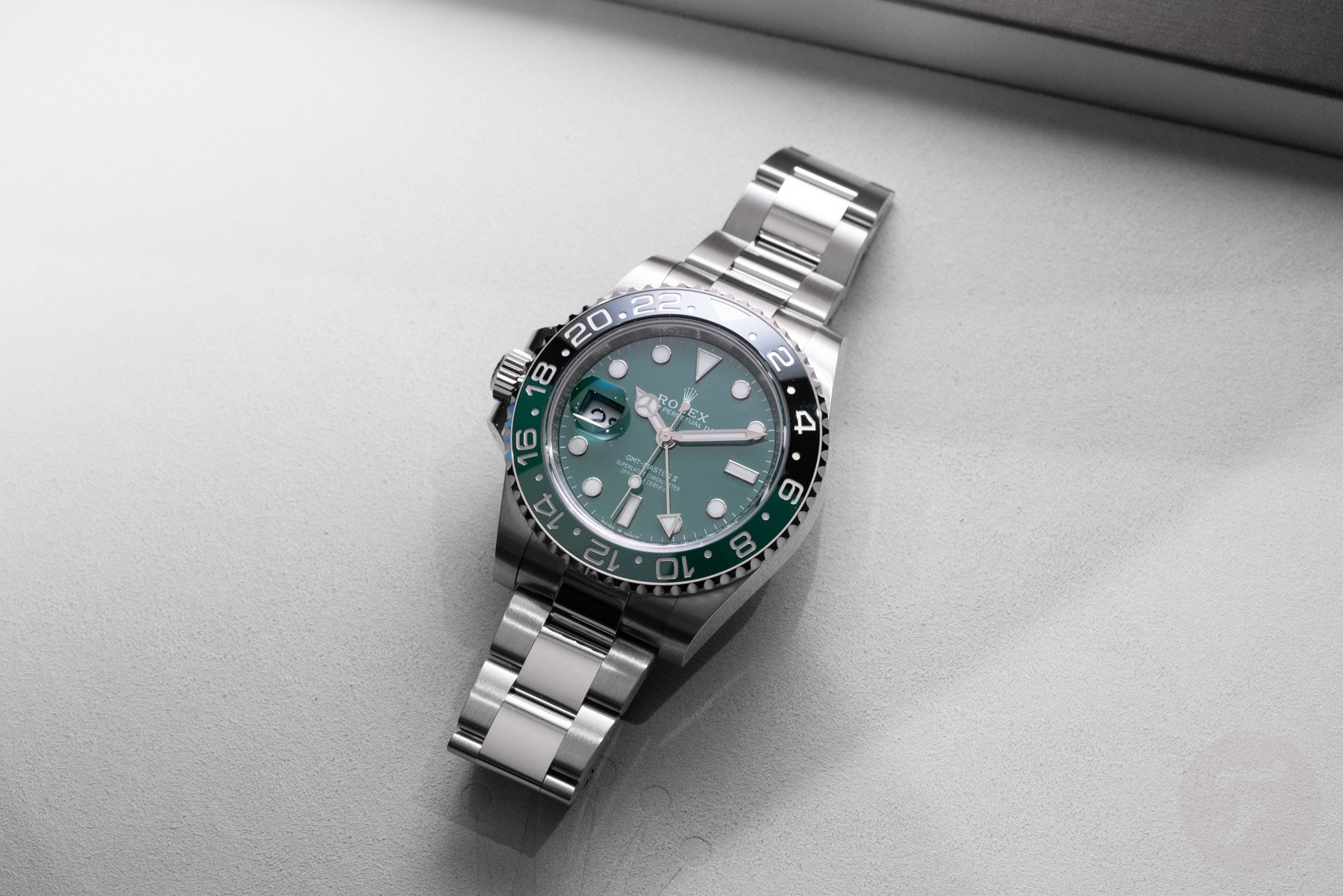Debuted But Not Debated: The Green Cerachrom Dial In The Left-Handed White Gold Rolex GMT-Master II “Sprite”
It was the Land-Dweller that stole the limelight, and understandably so. After all, it’s not often that The Crown presents an entirely new collection with a groundbreaking movement innovation to boot. I did feel sorry for the other novelties, though. The pastel-tinted Oyster Perpetual watches were quite lovely, for instance, but they got trampled on by the mighty Land-Dweller. Another watch that went under the radar was a reference that would typically have stood out. It was a watch with a glorious heritage and even presented a first for the brand. Neither the watch nor the feature was debated. I’m talking about the green Cerachrom dial in the left-handed white gold Rolex GMT-Master II “Sprite.”
Let’s not beat around the bush: the Rolex MT-Master II “Sprite” — or “Destro” or “Lefty” — is an awkward watch. It plays with the mind in a most unsettling way. When I first saw the watch at Watches and Wonders 2022 and handled it for an extended period earlier this year, it made me feel borderline uncomfortable. My brain registered something that made my hands try to correct the “mistake” by turning the black and green bezel so that it sat “correctly” when putting the watch on my left wrist with the crown on the right side. This only offered temporary comfort, however, because the watch is unusable when worn this way. One must either accept the reverse layout and wear it on the right wrist or walk away and try to obtain a traditional, non-lefty version.
What about that green Cerachrom dial in the left-handed white gold Rolex GMT-Master II “Sprite?”
Predicting that the most niche GMT-Master II models would disappear from the catalog this year seemed like a safe bet, but Rolex proved once again how unpredictable it is. The steel “Sprite” is still alive and kicking, and it now has a luxurious relative in white gold. The reference 126729VTNR (€48,450) is a 40 × 11.9mm watch on a white gold Oyster bracelet with brushed and polished links and a folding Oysterlock clasp. All the numbers and specs are the same as the steel version, although the precious-metal newcomer does not offer the choice between an Oyster and a Jubilee bracelet.
To be complete, the dial (more about that first for the brand later) features applied white gold hour markers and hands with Chromalight inserts that glow blue. On the dial, we also stumble upon a tiny difference with the steel “Sprite.” The white gold version shows a GMT hand with a steel-colored stem instead of a green one; this is, quite obviously, for readability purposes.
Inside the case beats the familiar 4Hz Rolex caliber 3285. This COSC-certified chronometer movement with 70 hours of power reserve features all the Rolex bells and whistles, such as a Chronergy escapement and a Parachrom hairspring.
A first for Rolex
On to the glossy green ceramic dial. Rolex produces the Cerachrom dial more or less the same way it creates its dials in natural stone. It’s similar because the stone or ceramic material disc is fitted onto a brass plate. It’s interesting to see how ceramic has evolved with Rolex. In 2005, the brand’s first ceramic bezel insert, including platinum-filled markings, debuted in black. Eight years later, the first bicolor one in black and blue came out. Now, 2025 marks the debut of the brand’s first ceramic dial.
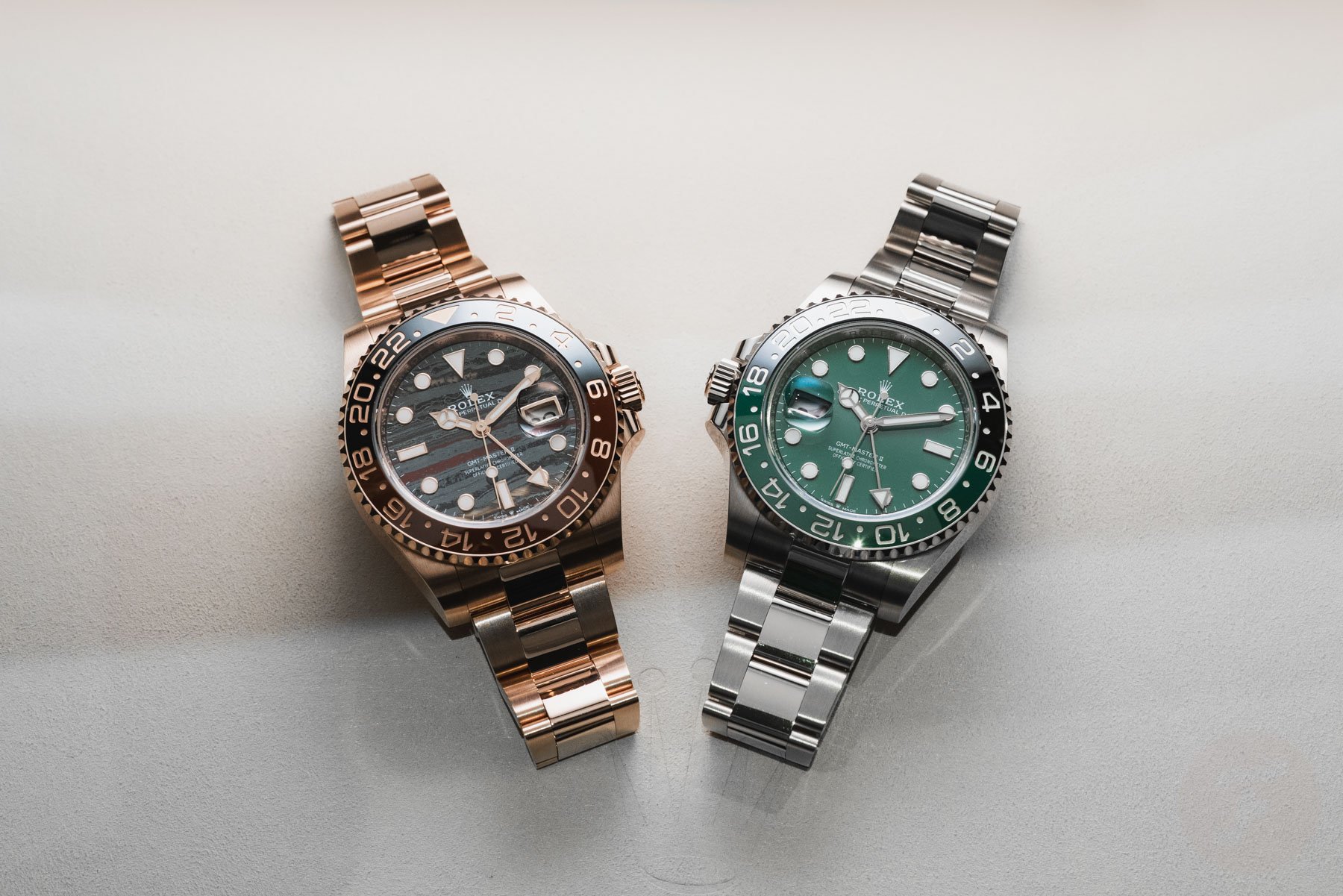
The 18K Everose gold GMT-Master II with a tiger iron dial next to the new “Sprite” with a green Cerachrome dial crafted in a similar way
Speaking of which, in daylight and artificial light, the exact color match of the shiny bezel insert and dial creates a very uniform look. Maybe three years of GMT-Master II “Lefty” subconsciously prepared me for a new iteration, or at least it conditioned my brain such that I wouldn’t experience the same shock I did in 2022. Either way, fxthe latest “Sprite” goes down way easier than the first one. The green dial also befits a quirky creation better than a standard black one. When you go all extravagant on top, don’t wear Levi’s 501s on the bottom. Instead, go all in with a “no guts, no glory” mindset.
Future ceramic dials
Now that Rolex has introduced a green ceramic dial, will the brand also start fabricating dials in different colors with the same material? The answer is probably “yes” because why develop a production process just for one (pretty limited) watch? Remember, Rolex produces in bulk. The brand does it very carefully and precisely, but Rolex is a mass producer with a production number of around a million watches per year. The possibilities for ceramic dials are vast. A glossy red dial to match the bezel of a precious-metal “Pepsi” pops to mind. But that’s not a watch I constructed in my head. I have something a bit more subdued in mind.
What if Rolex created a Submariner Date in brushed RLX titanium with a matte deep-sea-blue ceramic dial and matching bezel insert? It would be functional because of the matte surfaces, befitting the tool watch. But it would also be smolderingly luxurious because of the dark blue hue of the matte dial and bezel. What do you think? Should Rolex consider making this “Sub,” or do you have other ideas for ceramic dials? Please let me know in the comments.

